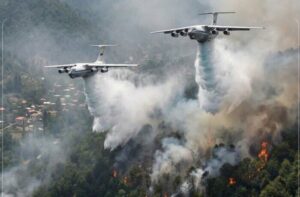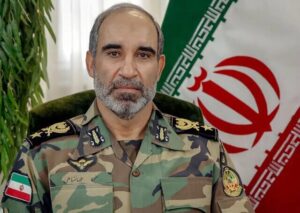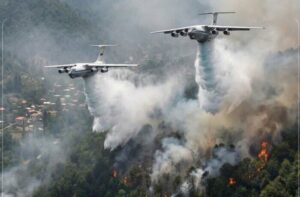On Thursday, Pentagon officials claimed that recent aggressive U.S. strikes on three key Iranian nuclear facilities achieved their goals but did not confirm whether these facilities were completely destroyed, as claimed by President Donald Trump. According to them, the battle damage assessment is still ongoing.
The Israeli regime’s aggressive military attack on Iran occurred at dawn on June 13. During these attacks, nuclear facilities, military sites, and civilian locations, including medical centers, Evin Prison, and residential areas, were targeted, resulting in the martyrdom of several senior military commanders, nuclear scientists, and civilians.
On June 23, the U.S. directly intervened, targeting Iran’s nuclear facilities in Fordow, Isfahan, and Natanz with bunker-buster bombs. These facilities sustained significant damage, though no increase in external radiation levels was reported.
These aggressive attacks on Iran’s territorial integrity and sovereignty took place amid indirect Tehran-Washington negotiations regarding an agreement to limit Iran’s nuclear program and lift sanctions.
President Trump deceptively referenced opportunities for diplomacy while being aware of and fully supporting the Israeli regime’s plan to attack Iran.
Iran responded to these aggressive attacks through operations “True Promise 3” and “Herald of Victory.” Ultimately, the attacks on Iran ceased with a U.S. ceasefire proposal on June 24.
Iran has stated that the recent biased report by IAEA Director General Rafael Grossi paved the way for an anti-Iran resolution by the European troika and the U.S. at the IAEA Board of Governors and these aggressive attacks. Iran claims Grossi failed in his legal duties to protect Iran’s nuclear facilities, which are under the Iran-IAEA safeguards agreement.
Iran’s Islamic Consultative Assembly has also passed a resolution suspending cooperation with the IAEA.
Anadolu Agency reported that officials from the Defense Threat Reduction Agency discussed the June 21 attacks on Iran’s Fordow, Natanz, and Isfahan nuclear facilities during a telephone Q&A session.
One official, responding to whether battle damage assessments had been received, told reporters, “We have received initial assessments, and more comprehensive evaluations will be provided over time.”
The official added, “As General Dan Kane, Chairman of the Joint Chiefs of Staff, stated two weeks ago in his press conference, we concluded that we were successful in achieving the objectives we set.”
Defense Threat Reduction Agency officials, when asked if the munitions performed as designed, including penetrating to the intended depth, stated that this information is not yet complete.
The official noted, “I think precise details about depth are still pending further information in the full battle damage assessment.”
In response to reporters’ insistence on whether the munitions successfully penetrated the intended depth, the official said, “We don’t have that level of detail yet.”
General Dan Kane stated in a June 22 press conference that initial assessments of the attack damage indicated that all three facilities suffered “very severe damage and destruction” during the U.S. operation.
This contrasts with President Trump’s repeated claims that Iran’s nuclear sites were “destroyed.”
Despite these uncertainties, Defense Threat Reduction Agency officials described the mission as “successful.”
The official said, “As the Chairman of the Joint Chiefs stated, we achieved the goal we set. We provided information to decision-makers to act under their national command authority, and they achieved the intended impact. That is success.”
When asked to clarify what “impact” was achieved and whether it meant the destruction of Iran’s nuclear facilities, the official stated that full assessments are still ongoing.
In response to a reporter’s question about the effect of the attacks, the official said the U.S. was able to target these facilities “as planned.”
When asked, “What was the goal?” the official replied, “We provided information so they could strike the intended target.”
Another official noted, “The issue of objectives is beyond the scope of questions we can answer.”
Previously, Pentagon spokesperson Sean Parnell claimed that Iran’s nuclear program had been “set back one to two years” due to the U.S. attacks and asserted that the facilities were “completely destroyed.”







